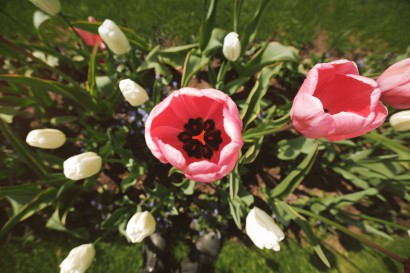Thousands of tulips in colours ranging from white to near-black can be admired in the Gardens of the Royal Łazienki until the end of May. In this way, the Museum will remind visitors of the tulipomania ‒ a European fascination with those flowers, which originated in the Netherlands.
Tulips will bloom in the Dutch Garden next to the Old Orangery as well as on the lawns, flowerbeds and parterres. Early varieties will appear already in mid-April, while the later ones will bloom until the end of May. Nearly 100,000 tulips in total will decorate the gardens in Łazienki. For a few weeks of spring our guests will have the opportunity to admire the unique beauty of these flowers and their diversified colours.
European fascination
In the Netherlands, tulipomania began around 1593 when tulip bulbs imported from Turkey reached astronomical prices, and the desire to own them was not limited to gardens only.
It can even be said that at the turn of the 16th and 17th century the tulip was hailed as the most desired, the king of flowers. At the time, it appeared in paintings of numerous masters, including works of Rubens, Rembrandt, J. Breughel the Younger, Balthasar van der Ast, Gabriel Metsu, and Bosschaert. It was also present in the symbolic paintings of “Vanitas” depictions.
Baroque creators and gardeners would go up against each other in expressing their love for the tulip. This led to making of vases, porcelain dinner sets and luxury items decorated with this motif. In the same epoch, the desired tulip became a symbol of madness and vanity.
Just like all fascinations, which in their first stages often go beyond any reason, the tulip also lost its significance with the passing years. In garden art, however, it has never been forgotten.
